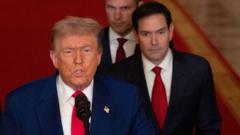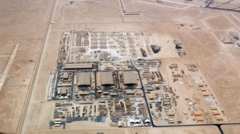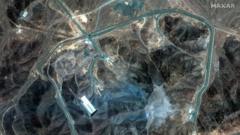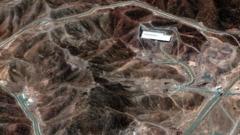**The recent imposition of a 25% tariff on car parts entering the US has created a new wave of challenges for automakers, spurring concerns over rising production costs and potential price hikes for consumers.**
**New Import Tariffs on Car Parts Unleashed in the US**
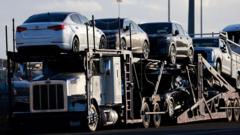
**New Import Tariffs on Car Parts Unleashed in the US**
**25% tax on key auto components and vehicles aims to streamline manufacturing within the US amid industry uncertainties.**
A newly implemented 25% import tariff on essential car components—such as engines and transmissions—was enacted in the United States, intensifying the complications faced by automakers amid a flurry of shifting regulations. This tariff follows shortly after previous measures were relaxed by former President Donald Trump due to mounting business concerns, although the tariff remains in place.
Trump stated that these tariffs are designed to incentivize car manufacturers to increase domestic production. However, industry analysts predict that any forthcoming expansions in US manufacturing could result in reduced production in other countries, ultimately leading to heightened operational costs and consumer prices. Currently, businesses are enjoying temporary relief; an uptick in sales spurred by fears of future price increases was noted, with General Motors and Ford both reporting doubled sales growth in April.
Nevertheless, General Motors has cautioned that it anticipates an additional $5 billion in expenses this year due to the new tariffs, including around $2 billion related to vehicles produced in South Korea and sold in the US market. Corporate executives have adjusted their forecasts, projecting a price increase of about 1%, contrasting with earlier expectations for price reductions.
In an indicator of volatility, multiple car manufacturers, including Stellantis—the parent company of Jeep, Fiat, and Chrysler—have rescinded their financial forecasts for the year, attributing this decision to the current unpredictability of the situation. Nearly half of the cars sold in the US last year were imported, leading to significant apprehension within the industry following the March announcement of the tariffs. This move drew immediate criticism, with warnings about escalated prices and production risks.
Trump's recent tariff approach has softened, particularly towards Canada and Mexico—two key partners in the automotive supply chain—due to longstanding trade agreements. As a result, parts manufactured within those countries that comply with the free trade agreements will be exempt from the new tariffs. Initially regarded as a temporary exemption, recent customs guidance suggests this reprieve may be permanent.
Further, the Trump administration has initiated policies to prevent firms from facing multiple tariffs on identical items and established a framework allowing car manufacturers to reduce import duties on certain parts sourced from abroad for production in the US.
S&P Global Mobility's principal automotive analyst, Stephanie Brinley, acknowledged that while recent changes may facilitate ease in operations, the imposition of tariffs continues to significantly alter the market landscape. Executives in the sector are investigating measures to ramp up domestic production to mitigate impending costs; GM announced a significant increase in truck production at its Fort Wayne, Indiana facility, alongside cutbacks in Canada.
Mercedes-Benz indicated a similar readiness to adapt production capacity at its Alabama plant. However, Labor Studies Director Art Wheaton from Cornell University expressed skepticism about the creation of new factories in the immediate future, given the inherent risks of substantial investment in an unstable market.
The administration is reportedly pursuing trade negotiations with critical countries like South Korea and Japan to support the auto industry, while experts like Wheaton opine that policy adjustments could emerge if economic repercussions become evident. "Everything is pretty good now," he remarked, cautioning that the complete ramifications of the tariffs have yet to fully emerge.







